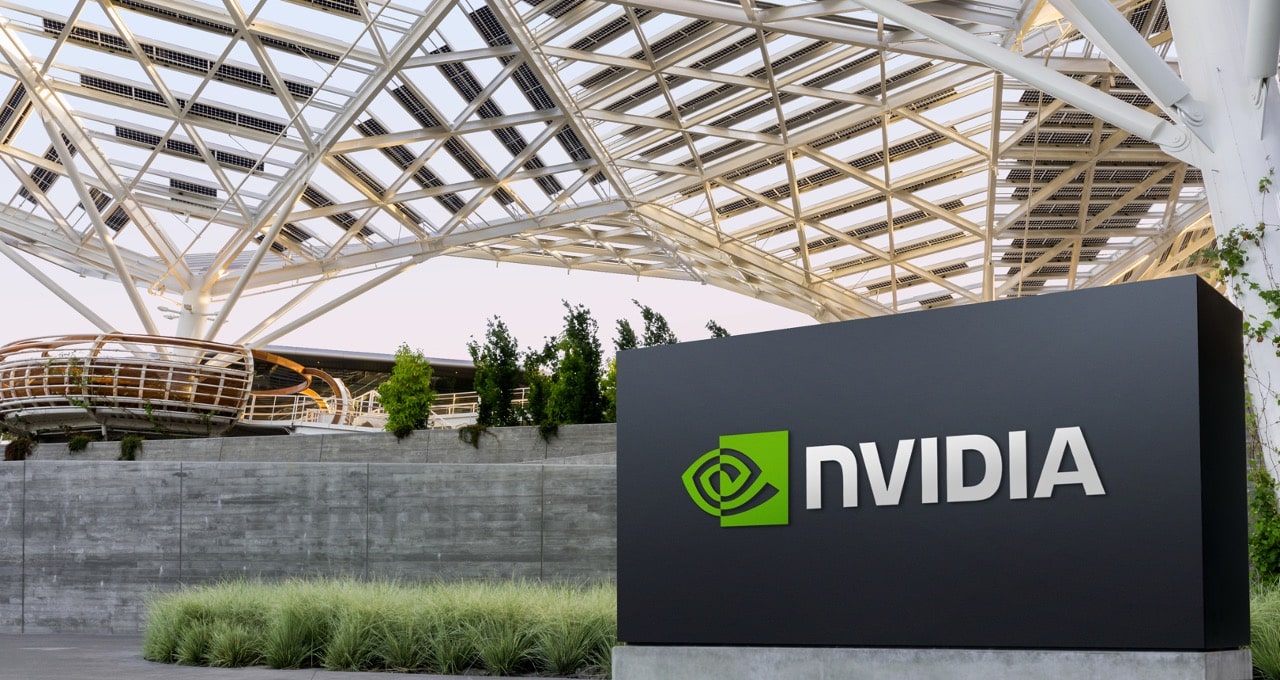Laptop Mag Verdict
Now offering even better performance and twice the graphics power, the Surface Book with Performance Base is the clear choice for demanding creative pros.
Pros
- +
Powerful discrete graphics in a 13-inch machine
- +
Unique detachable design
- +
Stylus support with 1,024 levels of sensitivity
- +
Solid battery life
- +
Vibrant display
Cons
- -
Expensive
- -
No USB Type-C port
- -
Doesn't have the most recent generation of CPUs or GPUs
Why you can trust Laptop Mag
The Surface Book really is the ultraportable that can do it all. It's got great performance, strong battery life and a gorgeous 13.5-inch touch screen with stylus support. And in seconds, it can transform from a laptop to a tablet, presentation device or even a portable drawing studio. That's why over the past year, when I needed to head out to an international tech convention or just a briefing down the street, out of all the laptops that made their way through our office, the Surface Book was the system I grabbed.
But after a year on the market, Microsoft's uber laptop needed a refresh, which is where the Surface Book with Performance Base comes in. It's got an upgraded Nvidia 965m graphics card, new fans and a few subtle design improvements. So while the Surface Book with Performance Base's starting price of $2,399 does seem a bit steep, it's not completely unwarranted, because even among the best ultraportables on the market, the Surface Book still lacks real competition.
Design
Sporting Microsoft's signature magnesium alloy and dynamic fulcrum hinge, the updated Surface Book with Performance Base looks nearly identical to last year's model. You still get a traditional laptop mode with a slick backlit keyboard and a release button next to the Delete key for when you want to detach the display from the base. However, upon closer examination, there are a few subtle differences.

While both this year's and last year's Surface Books share similar dimensions when closed (12.3 x 9.14 x 0.9 inches), the new Performance Base is a bit thicker, to accommodate the new GPU. The Surface Book with Performance Base is also slightly heavier (3.68 pounds versus 3.34 pounds), but more importantly, because its weight is concentrated more toward the bottom, this device is easier to open when you lift the lid with one hand. The deck features a subtle swell that rises away from the sides, and a new indented keyboard tray rather than the almost perfectly flat deck on last year's machine. There's even a new, dual-fan setup inside to help keep things cool.
MORE: Best 2-in-1s (Laptop/Tablet Hybrids)
Display: Pretty much perfect
One of the best things about the Surface Book is its 3000 x 2000, 13.5-inch PixelSense display. It's got everything we look for in a good screen: It's bright, it's vibrant, it's accurate, and because you can detach the display from its body, you can take it almost anywhere. Even its somewhat unusual 3:2 ratio makes sense, because while you get black bars on top on bottom when watching wide-screen movies, it offers more screen real estate when you want to edit photos or videos. The importance of this really can't be understated, because it's one of the main reasons I brought the old Surface Book to events. There's more room for toolbars and settings panels in Photoshop, and because colors from its display look almost exactly the same as they do on my calibrated desktop monitor, I can trust what I see when I adjust curves and levels.
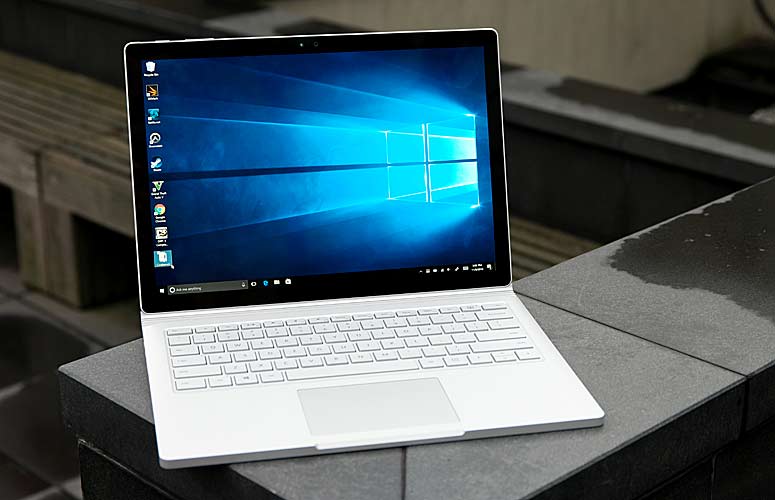
With a measured brightness of 376 nits, the Surface Book with Performance Base puts out a lot of light, although the new 2016 13-inch MacBook Pro tested even brighter, at a stunning 495 nits.
However, the Surface Book's color range was nearly identical to the new 13-inch MacBook Pro. It covered 112.6 percent of the sRGB spectrum versus 113 percent for the MBP. And with a Delta-E rating of 0.63, the Surface Book is even more accurate than the MBP's rating of 1 (numbers closer to zero are better).
The Surface Book still supports 1,024 levels of pressure sensitivity for use with the device's bundled pen. Unlike with a lot of styluses, Microsoft offers a range of different tips, so you can customize the pen's feel however you want.
Performance: The CPU has stayed the same
Featuring an Intel Core i7-6600U CPU, 16GB of RAM and a 1TB PCIe SSD, our fully loaded $3,299 review unit is pretty speedy. Everything feels fast, snappy and more responsive, even when the system is tied up with 20 tabs open in Edge, multiple 1080p videos playing in the background and a handful of photos open in an editing app.
However, where I take issue with the Surface Book's specs is in its lack of even newer CPUs, because while this system comes with a 6th-Gen chip, laptops with 7th-Gen processors are already on the market. And it pains me to know that as good as this system's performance is, it could have been even better.
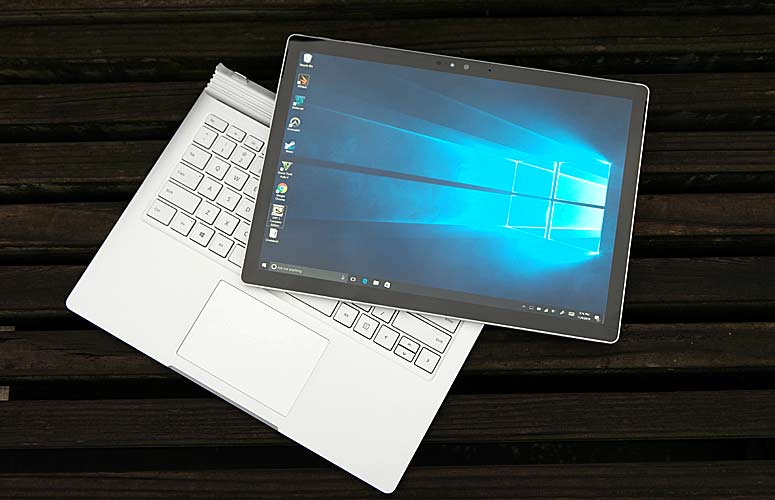
On Geekbench 4, which combines storage and compute speeds into a single score, the Surface Book with Performance Base scored 7,559. That's better than the ultraportable average of 6,518 and a fair bit ahead of the 2016 13-inch MacBook Pro's score of 7,053. However, the MacBook Pro features an older 6th-Gen Core i5 CPU. HP's Spectre x360, which has a 7th-Gen chip, scored 8,147, which was 7 percent higher than the Surface's.
It's a similar story for web performance. On the JetStream 1.1 JavaScript test, the Surface Book with Performance Base's score of 226.5 tops the MacBook Pro's score of 186, but fell behind the Spectre x360's score of 238.
And not to beat a dead horse into the ground, but the same thing happened when we used OpenOffice to sort 20,000 names and addresses. The Surface Book took 3 minutes and 42 seconds to complete the task, which was better than the MacBook Pro's time of 4:39, but slower than the Spectre x360's mark of 3:33.
MORE: Best Laptops for College Students
When we duplicated a DVD's worth of mixed-media files, the Surface Book's 1TB PCIe M.2 SSD posted a transfer rate of 363.5 MBps. That's right around where we expect a premium ultraportable to be, although the 13-inch MacBook Pro's transfer rate of 508.9 MBps was even faster.
Graphics: Double the power of last year's Book
The thing that really sets the Surface Book apart from other ultraportables is its optional discrete graphics. For 2016, the Performance Base is sporting an upgraded Nvidia 965m GPU with 2GB of video RAM, which really does offer twice the graphics performance of last year's machine. It's really quite impressive, and a huge boon to productivity, considering similar systems such as the HP Spectre x360 and 13-inch MacBook Pro are limited to much weaker Iris Pro or Intel HD integrated graphics.
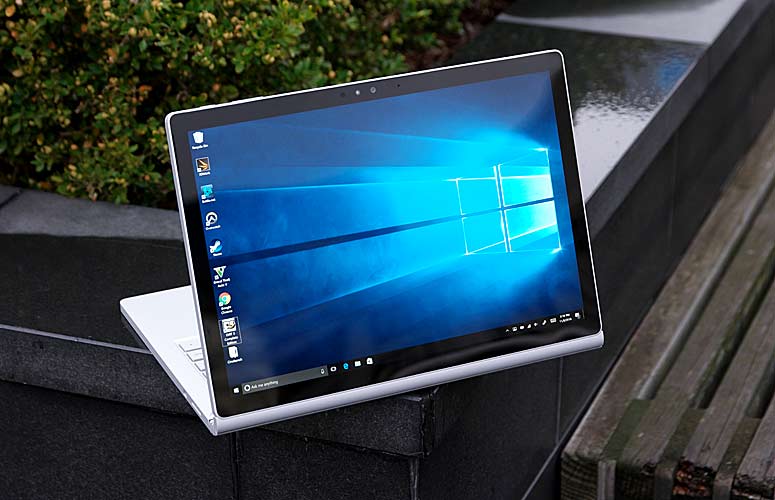
On Cinebench's OpenGL graphics test, the Surface Book with Performance Base reached 78.5 fps, more than double the 35.69 fps we saw from the 2016 13-inch MacBook Pro with Iris 540 graphics.
Compared to other Windows machines, the Surface Book's score of 4,406 on 3DMark's Fire Strike test was four times higher than that of the HP Spectre x360 and its Intel HD Graphics 620.
And if you like to game on the side, the Surface Book with Performance Base is better at that, too. At 1920 x 1200 in Overwatch on medium settings, last year's Surface Book struggled to stay above 30 fps. Meanwhile, with its Nvidia 965m GPU, the Book with Performance Base easily stayed between 75 and 90 fps at the same settings. In fact, you can even turn graphics settings to High without worrying about frame rates dropping below 60.
The Surface Book with Performance Base sports some pretty impressive longevity.
In a game like Dirt 3: Complete Edition, which works on both macOS and Windows, the Surface Book with Performance Base posted an average frame rate of 117 fps at 1920 x 1080 and medium settings. The 2016 13-inch MacBook Pro managed just 35.6 fps on medium settings, and that was with a lower resolution of 1650 x 1080.
Still, let's not get it twisted. Like its CPU, the graphics card in the Surface Book with Performance Base is also a generation behind what's currently available. So while the new Surface Book is pretty potent, if your main goal is gaming, you'd be much better off with something like the Alienware 13 R3, which isn't that much bigger and features one of Nvidia's Pascal-based 1060 GPUs. On 3DMark Fire Strike, the Alienware 13 R3 scored 9,557, which was two times higher than the Surface Book's 4,406. However, you won't find another 2-in-1 at any size with this level of discrete graphics.
Keyboard and Touchpad
Aside from the Surface Book's new recessed keyboard tray, everything else is pretty similar. You still get the same soft white backlighting, and standard numbers for key travel (1.5mm) and actuation weight (60 grams). As such, when I ran through 10fastfingers.com's typing test, I had no trouble hitting my typical average of 80 words per minute.
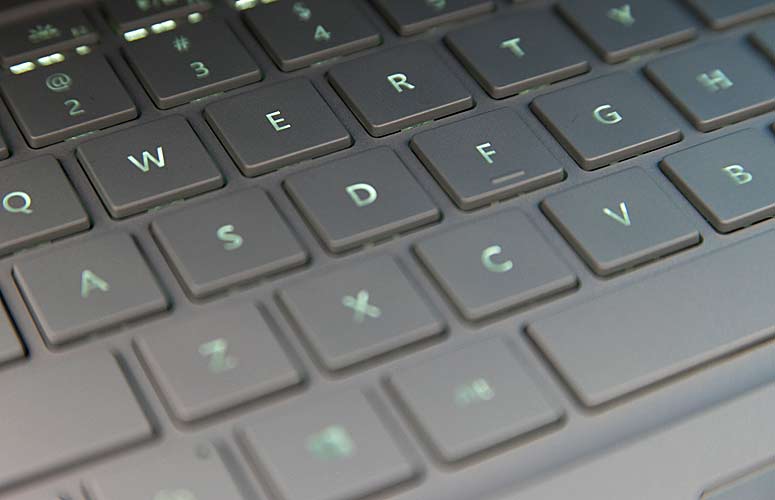
The Surface Book's 4.1 x 2.7-inch touchpad is also essentially the same, although because Microsoft has had a year to tweak and customize this touchpad's performance, we didn't run into any of the sluggishness we encountered when we reviewed its predecessor last year.
MORE: The Best Laptops for Every Need
Ports and Webcam
Connectivity on the updated Surface Book also remains unchanged. You get two old-fashioned USB 3.0 ports, mini Displayport, combo headphone/mic jack and something that is quickly becoming an endangered feature: an SD card reader. The Surface Book also retains its proprietary power jack, which has a bonus USB port on its power brick for times when you just need to charge one more device.
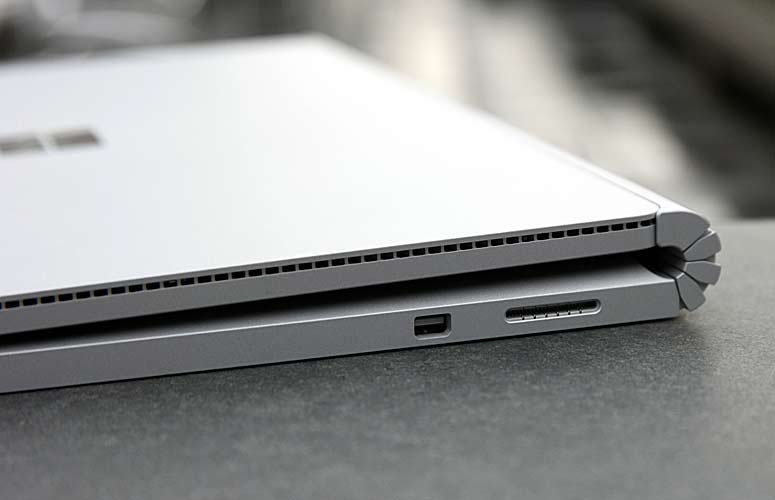
However, in an ideal world, Microsoft would have replaced its proprietary power port with a USB Type-C port, preferably one with support for Thunderbolt 3, which would give the system not only more flexibility, but also capacity for options for higher-speed data transfer and video output.
Also like last year's model, the updated Surface Book still sports an 8-megapixel camera in back and a 5-MP cam in front with support for facial recognition sign-on using Windows Hello.
Heat
During casual use, excess heat is pretty much nonexistent. In most cases, the fans don't even spin up, and after 15 minutes of watching HD video, the hottest spot (the back of the display) measured just 85 degrees Fahrenheit.
But after more-intense sessions, the back of the display can get pretty warm, and I often found the whole rear of the system radiating heat. But since temperatures never got far above 100 degrees, it wasn't a huge concern.
Battery Life
While you prolly won't get 16 hours of battery life, like some of Microsoft's ad claims, with a time of 9 hours and 10 minutes on Laptop Mag's Battery Test (continuous web surfing over Wi-Fi), the Surface Book with Performance Base sports some pretty impressive longevity. Last year's Surface Book with discrete graphics lasted marginally longer, with a time of 9:31, despite having a significantly less powerful graphics card. However, last year's Core i5 Surface Book without a GPU fared even better, with a time of 12:29.
Compared to systems without discrete graphics, the 2016 MacBook Pro (non Touch Bar) lasted significantly longer, with a time of 12:21, while HP's Spectre x360 lasted about an hour longer, with a time of 10:06.
MORE: Laptops with the Longest Battery Life
Bottom Line
With this device's minimalist good looks, exquisite screen and all-purpose design, there still isn't anything like the Surface Book. And now, the Performance Base adds double the graphics power compared to last year's model, but without sacrificing longevity. That said, I still wish Microsoft had included the latest generation of CPUs and GPUs and an option for a model with 32GB of RAM.
Sure, some other 13-inch systems are thinner or have fancy light strips above the keyboard, but none of them can match the Surface Book's total package. Because when people with other machines are reaching for dongles, uselessly tapping the screen or wishing they had a more powerful GPU, it's clear that the Surface Book is the real top pick for creative pros.
Surface Book with Performance Base Specs
| Bluetooth | Bluetooth 4.0 |
| Brand | Microsoft |
| CPU | 2.6-GHz Intel Core i7 6600U CPU |
| Card Slots | SD memory reader |
| Company Website | www.microsoft.com |
| Display Size | 13.5 |
| Graphics Card | Nvidia 965m with 2GB of vRAM |
| Hard Drive Size | 1 TB |
| Hard Drive Speed | 7,200rpm |
| Hard Drive Type | M.2 PCIe SSD |
| Native Resolution | 3000 x 2000 |
| Operating System | Windows 10 Home |
| Optical Drive | None |
| Ports (excluding USB) | USB 3.0, Mini DisplayPort |
| RAM | 16GB |
| Size | 12.30 x 9.14 x 0.51-0.90-inches |
| Touchpad Size | 4.1 x 2.7-inches |
| USB Ports | 2 |
| Video Memory | 2GB |
| Warranty/Support | 1-year limited hardware warranty |
| Weight | 3.63 pounds |
| Wi-Fi | 802.11ac |
Sam Rutherford is a writer at Laptop Mag, focusing on laptop reviews and all the gadgets that make using a notebook just that much easier (or more fun). Over the years, he reviewed some iconic laptops, including gaming beasts from Alienware, Asus, Acer, Gigabyte, and HP. Outside of gaming laptops, Sam has also reviewed notebooks oriented around productivity, such as the Lenovo IdeaPad or the Dell XPS.
